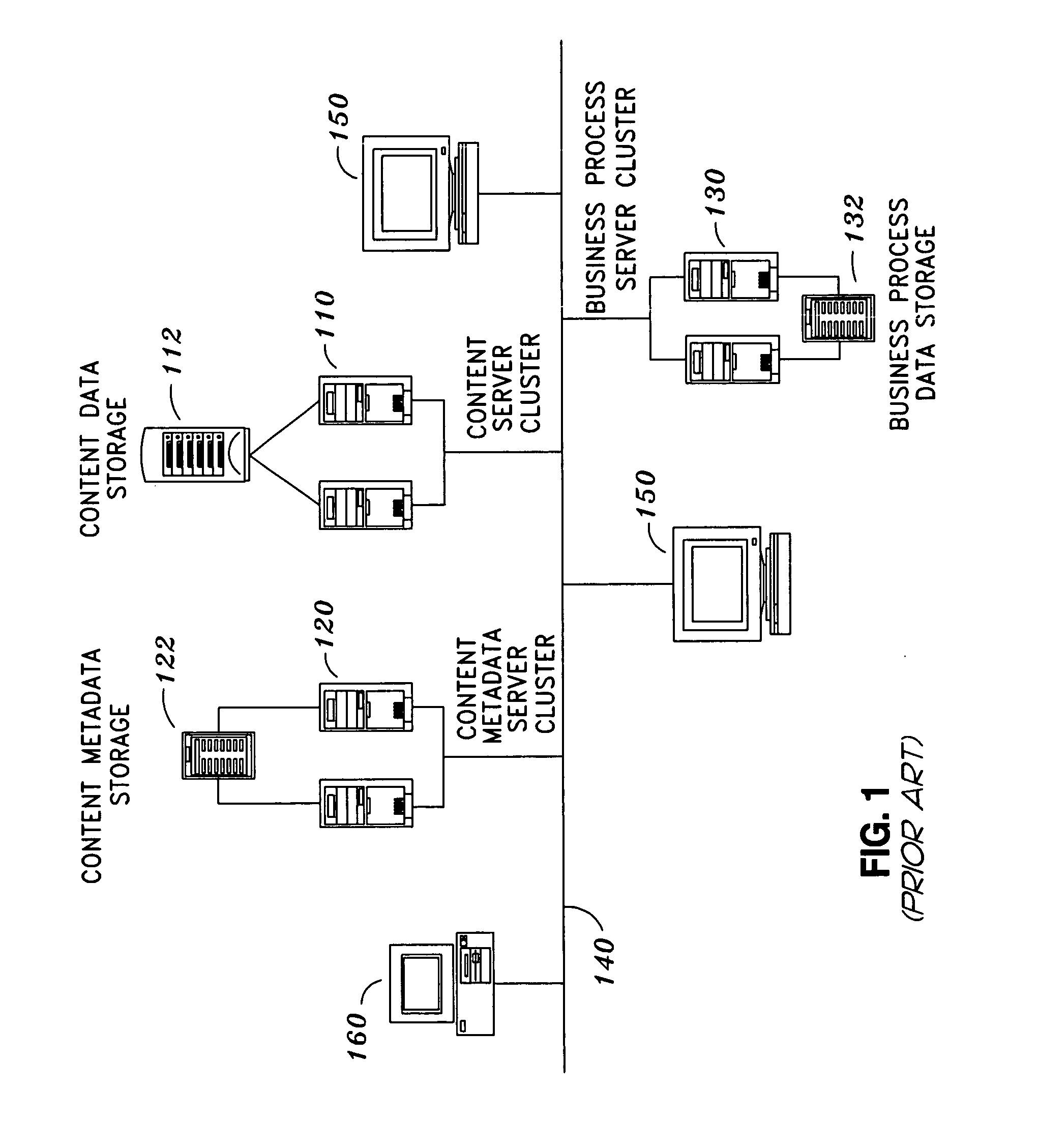However, being able to store a very large amount of data creates yet another type of problem, as the large quantity of data by its very nature gives rise to the proverbial “needle in the haystack” problem.
As the size of the data in the storage grows, the task of finding and retrieving the exact data and information needed for a particular purpose becomes more and more challenging.
The problem of finding “a needle in the haystack” is compounded by the existence of dissimilar data types which are managed by different applications with different access and / or search methodologies.
These problems make the task of “finding the right information for the right person at the right time” difficult for modem enterprises.
For these types of records and data, the storage and content management problems are particularly acute due to the fact that the size of overall data must inevitably grow since the records cannot be deleted or modified and must be kept for an extended period of time.
One of the shortcomings of existing solutions is lack of integration among various components of enterprise content management and storage systems.
Since there is currently no single integrated solution that provides the entire spectrum of process management, content management and storage capabilities, the enterprises must integrate various components of the
enterprise information management system manually.
This lack of integration causes several serious problems.
The first is difficulties in system administration including installation, configuration, and
upgrade management.
More often than not, the installation and configuration procedures and tools are quite dissimilar from each other, requiring the operators and administrators to learn and remember the dissimilar procedures and methods.
Furthermore, since the configuration information for the entire system is not (and cannot be) maintained by any
single component, the system-wide configuration data must be maintained manually through a process that is external to the system, rendering the management of system-wide configuration information an error-prone, complex, and difficult process.
This leads to difficult problems of timing upgrades,
upgrade synchronization, and system-wide version maintenance and management.
In particular, system-wide version information must be maintained, as interaction between different versions of
software and / or hardware sometimes can result in unexpected problems which are difficult to track down.
However, as was the case for system-wide configuration information, system-wide version information must be maintained external to the system for exactly the same reasons, leading to similar system administration difficulties.
The second type of problems that arises from mixing and matching components from different vendors is dissimilar and incongruent
semantics among various system components.
Naturally, there are competing design principles and paradigms, and designers and architects of information systems do not think alike.
However, the
semantics of the primitives may not be entirely consistent with the
semantics of the enterprise content management or
business process management systems that operate on top of the storage primitive
layers.
Dissimilar and incongruent semantics across the system boundaries can sometimes lead to fundamental system problems with adverse consequences.
Furthermore, dissimilar and inconsistent semantics can result in difficulties in system administration, as it is difficult to
handle several different semantics and conceptual frameworks at the same time.
Although content bridges provide useful tools that can improve the quality of
system integration, several problems remain.
The first is that some inconsistencies across disparate systems simply cannot be resolved.
The second, and a more serious problem is that content bridges do not and cannot address the issues of replication and
disaster recovery, since content bridges focus only on the conceptual problems of integrating dissimilar semantics of disparate systems.
If these subcomponents become “out of
sync” from each other, the entire
data set may become meaningless, rendering the
enterprise system useless.
Nevertheless, existing products and technologies do not provide mechanisms to synchronize replication and
recovery with external systems.
These are difficult and frustrating processes that are also error-prone.
The problem of replication and
recovery synchronization is especially acute for “fixed content” systems discussed above.
Thus, for currently available fixed content systems, synchronization of replication and
recovery must be done manually, with all of the accompanying problems described above.
Another problem that comes from integrating disparate components from different vendors is performance degradation.
In either case, performance degradation is inevitable whenever interface
layers are introduced to a system, because the system needs to perform extra steps in order to process data through the interfaces or bridges.
 Login to View More
Login to View More  Login to View More
Login to View More 


